1-Day Local Experience: Outdoor Adventures in Wadi Rum
Wadi Rum, Jordan
1 days
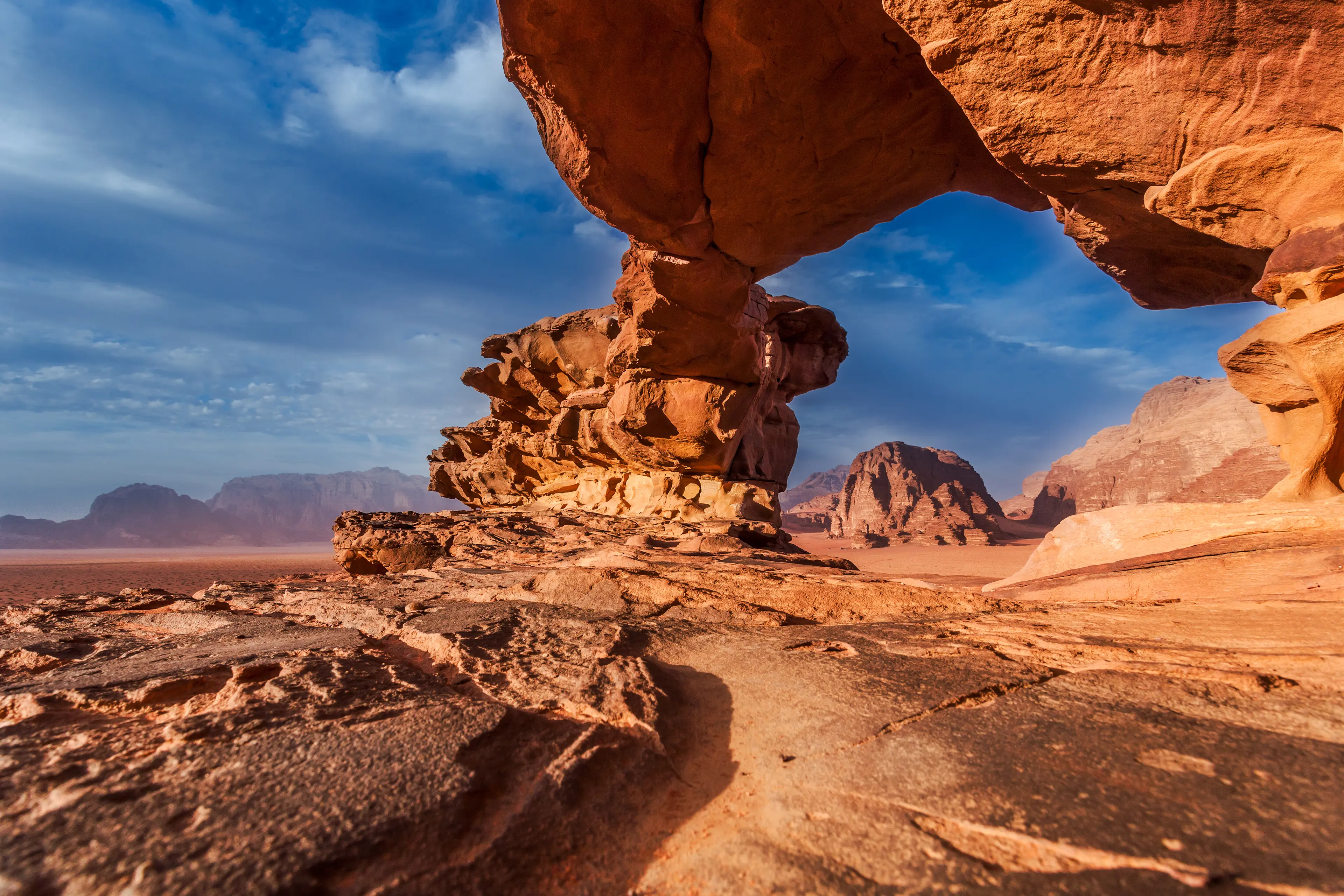
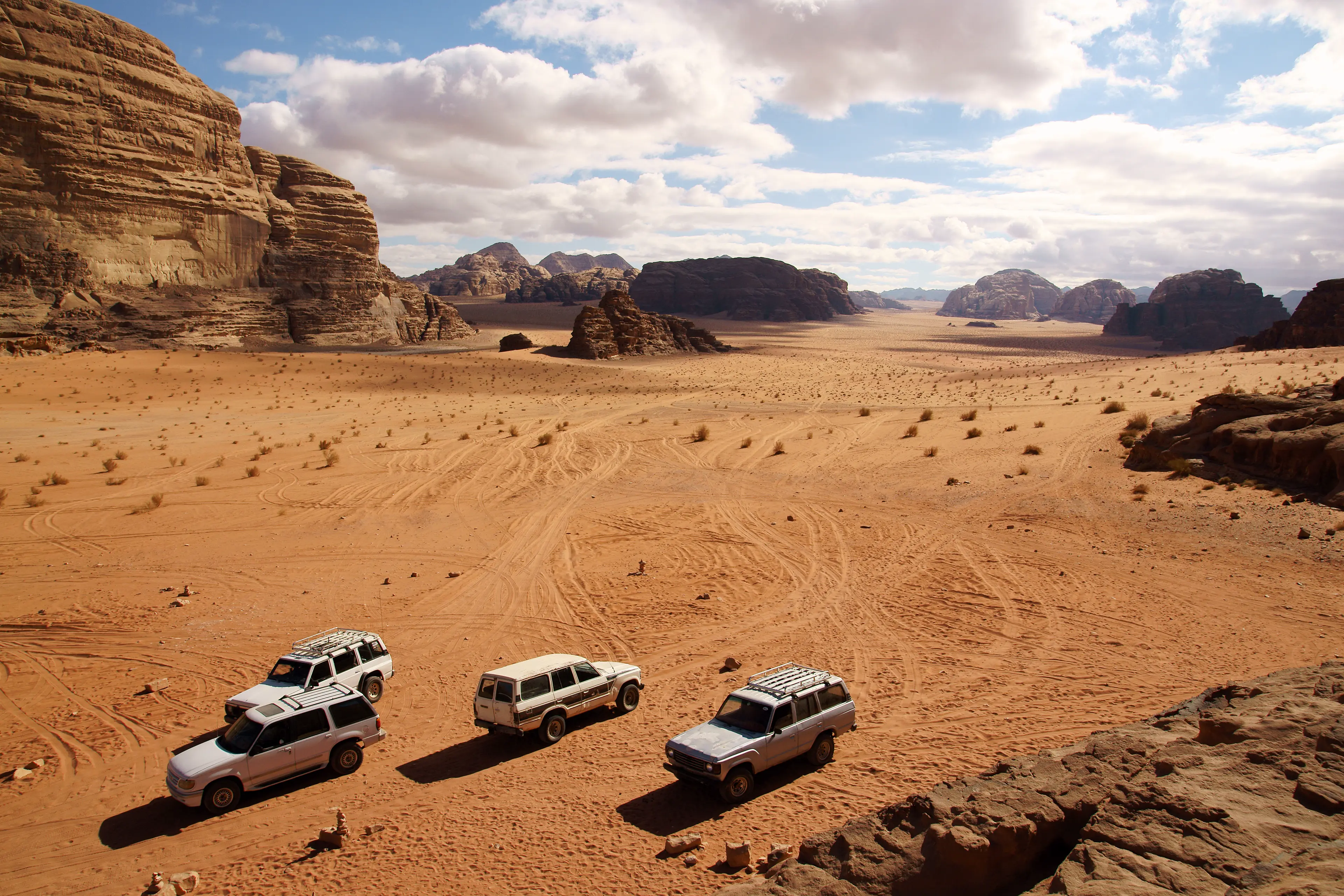
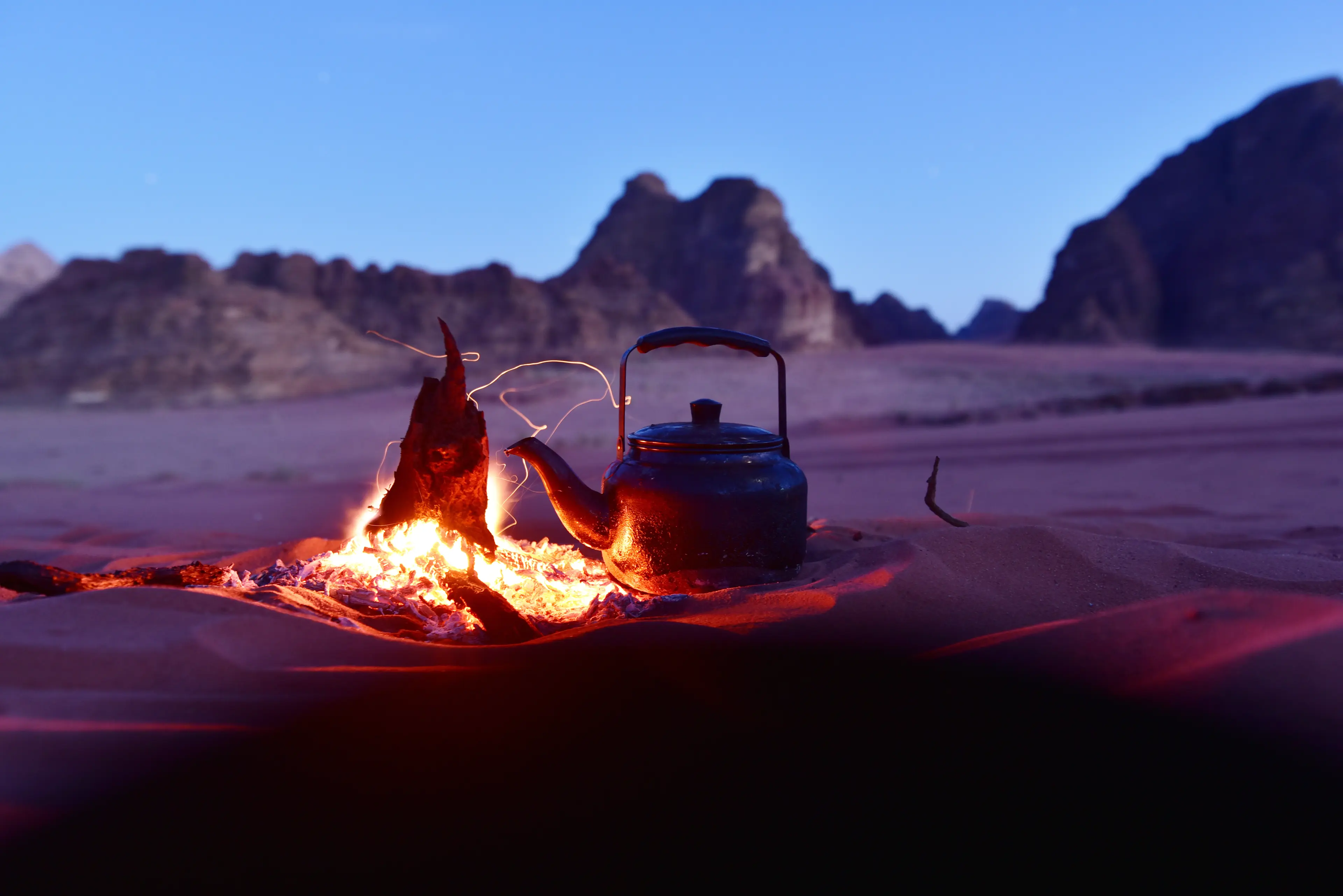
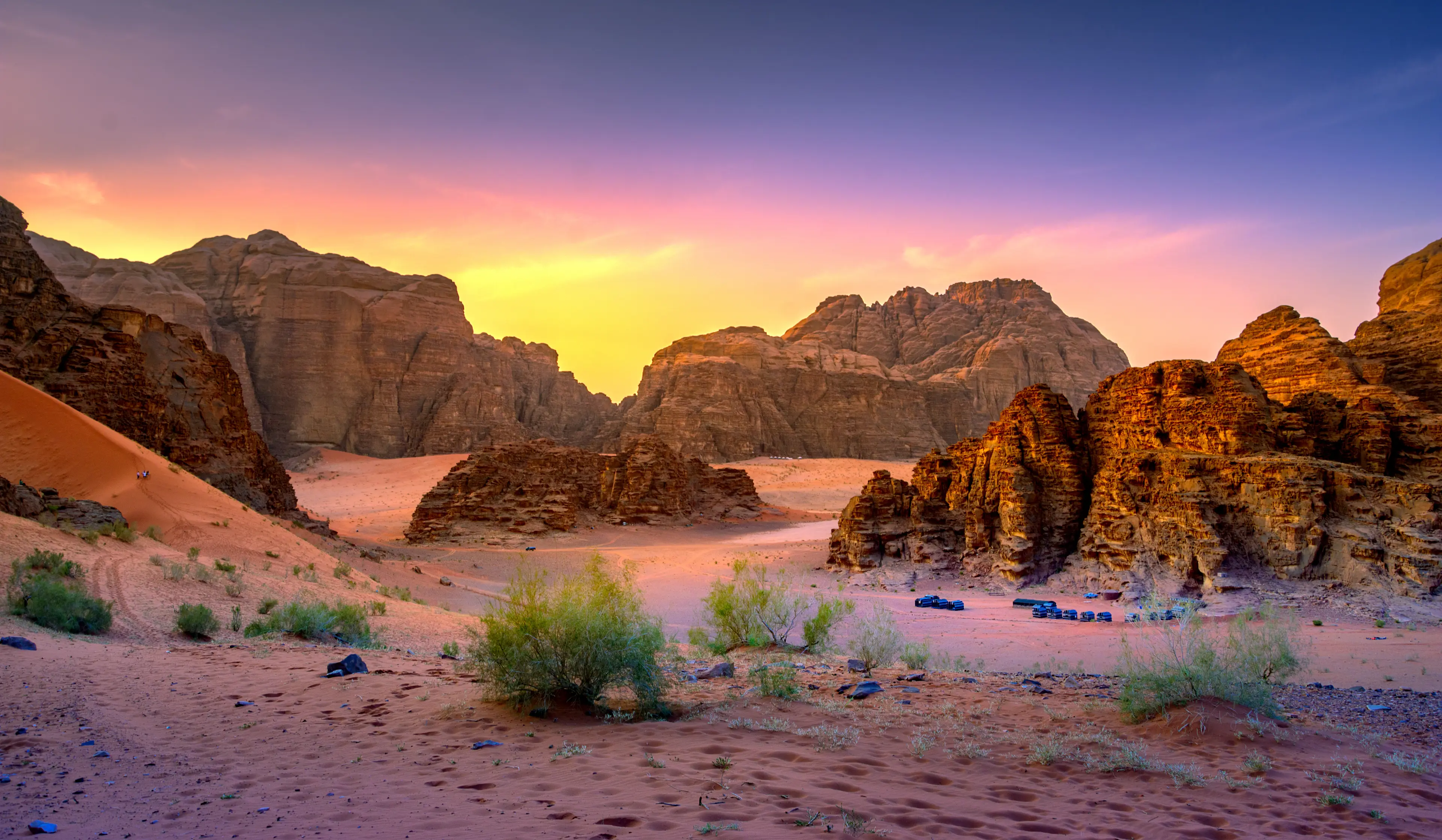

About Wadi Rum, Jordan
Experience the breathtaking beauty of Wadi Rum, Jordan, a majestic desert landscape steeped in history and culture. This UNESCO World Heritage site, also known as the Valley of the Moon, offers stunning vistas of red sand dunes, towering cliffs, and ancient rock formations. Embark on a thrilling jeep safari, camel trek, or hot air balloon ride to explore this Martian-like terrain. Discover prehistoric petroglyphs and inscriptions on a guided tour, or spend a night under the stars in a traditional Bedouin camp. With its unique blend of adventure, tranquility, and cultural immersion, Wadi Rum promises an unforgettable travel experience.
1-Day Itinerary
Attractions in Itinerary (3)
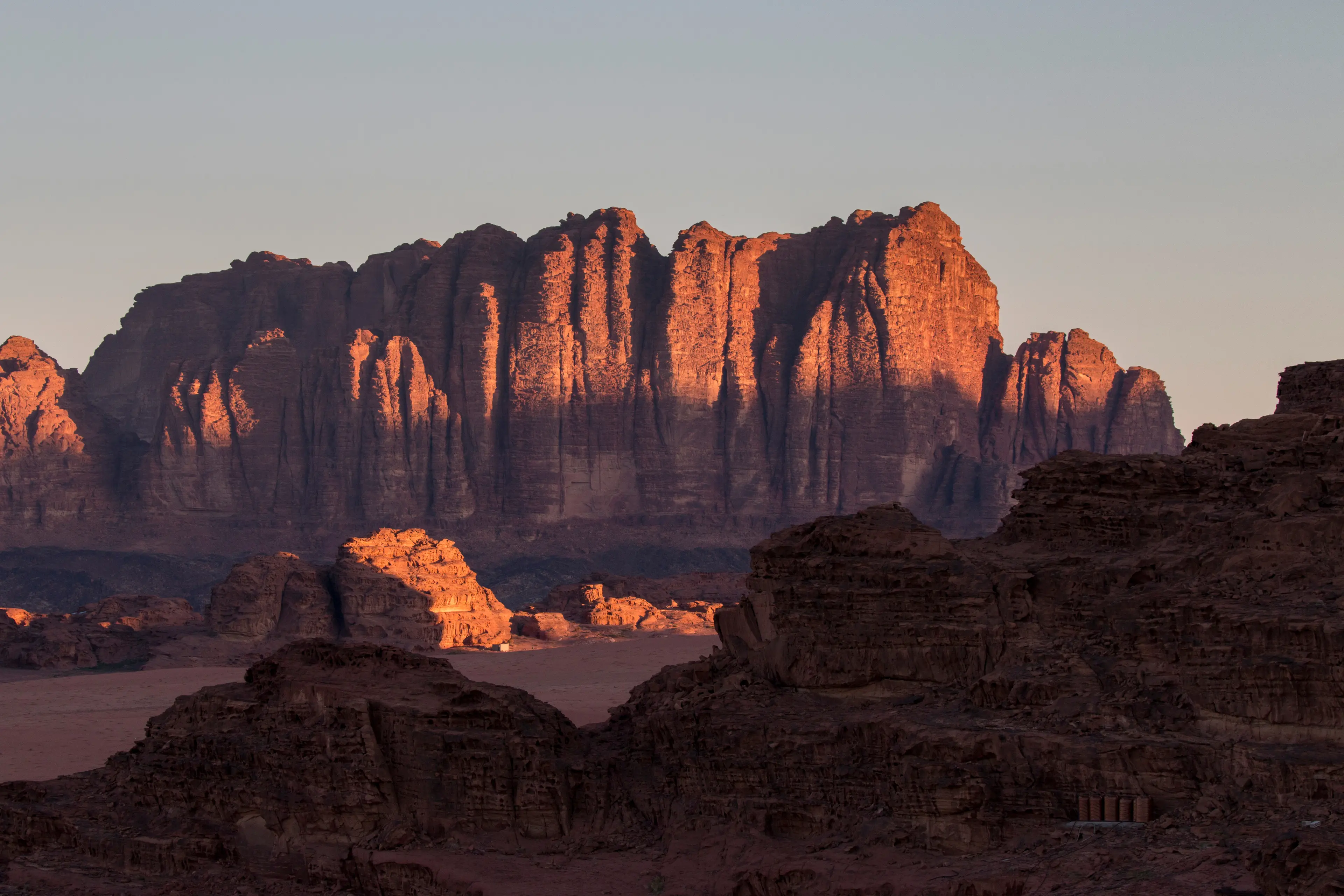
1Sunrise jeep tour
Experience the breathtaking beauty of Wadi Rum at sunrise on a jeep tour. This tour takes you through the desert landscape, offering stunning views of the sand dunes, rock formations, and natural bridges.

2Camel trek
Embark on a camel trek through the desert landscape of Wadi Rum. This tour offers a unique perspective of the area, allowing you to experience the desert as the Bedouin have for centuries.

3Night in a Bedouin camp
Experience the traditional Bedouin lifestyle with a night in a desert camp, complete with traditional food and music.
Local Food and Drinks (12)

Mansaf
This is Jordan's national dish. It's a hearty meal made of lamb cooked in a sauce of fermented dried yogurt and served with rice.
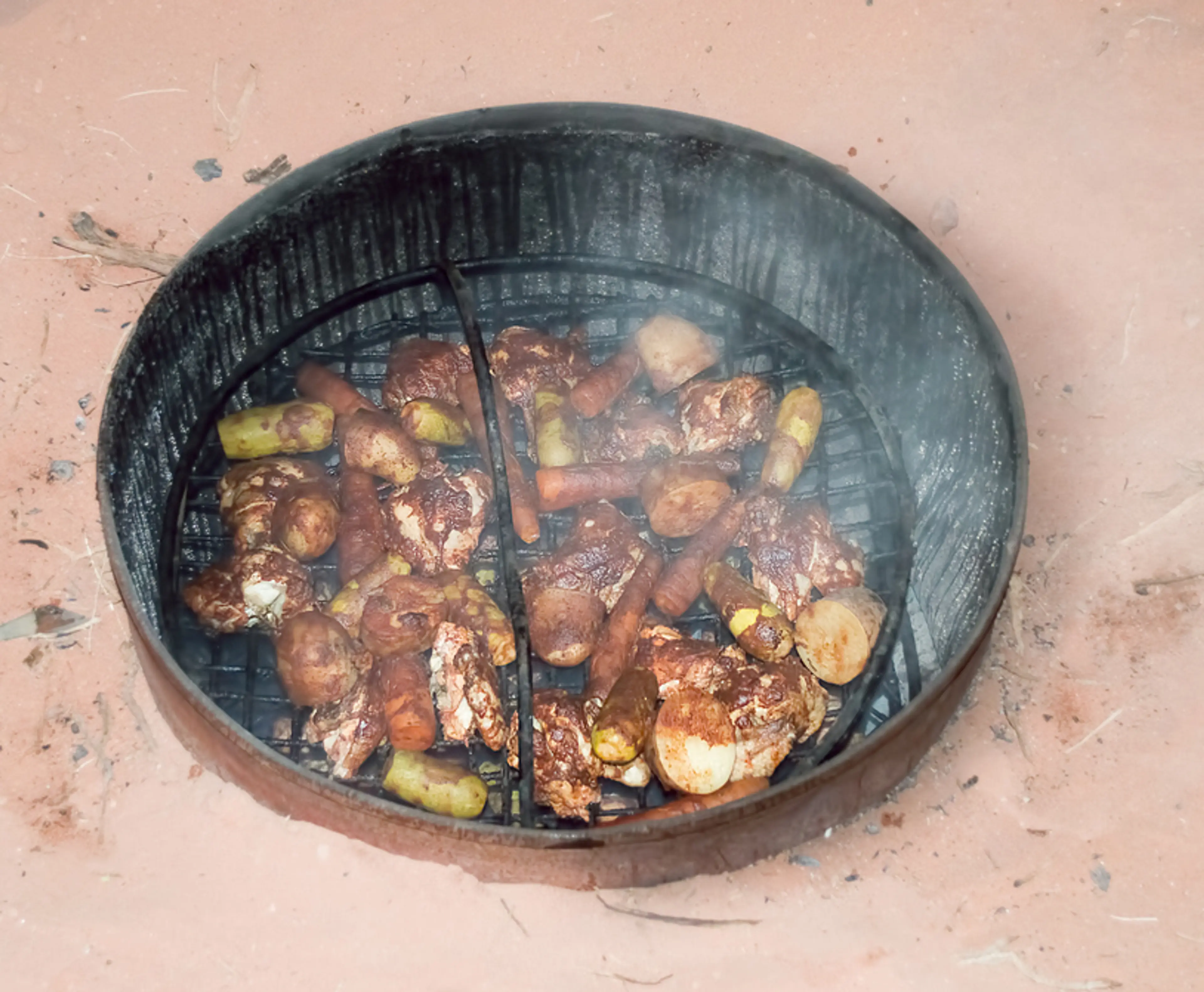
Zarb
A traditional Bedouin dish of Wadi Rum, Zarb is meat and vegetables slow-cooked in an underground sand oven.

Maqluba
A traditional Jordanian dish, Maqluba is a one-pot dish with meat, rice, and vegetables, which is then flipped upside down when served.
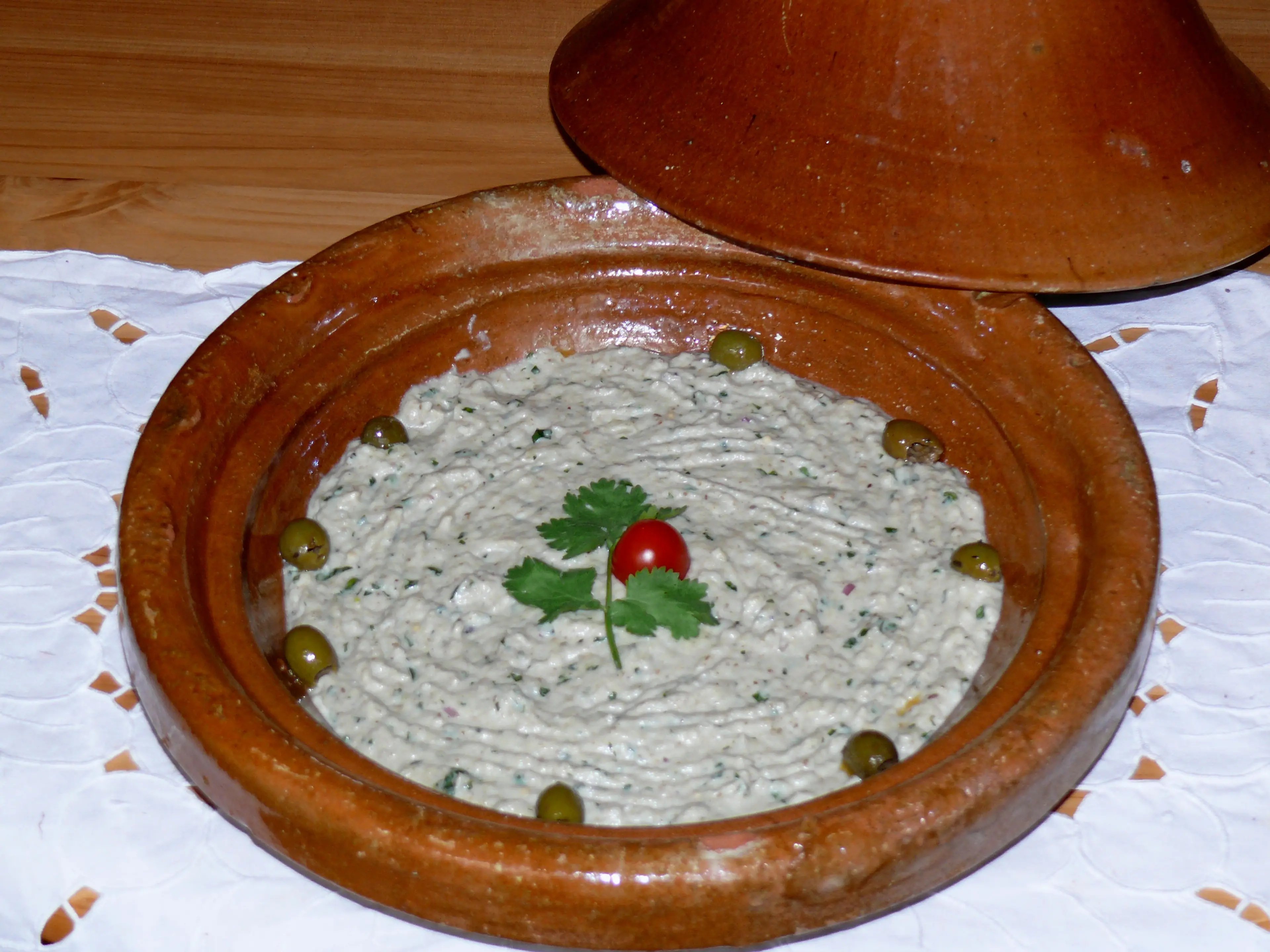
Mutabbal
A popular appetizer in Jordan, Mutabbal is a smoky eggplant dip mixed with tahini, garlic, and lemon juice.
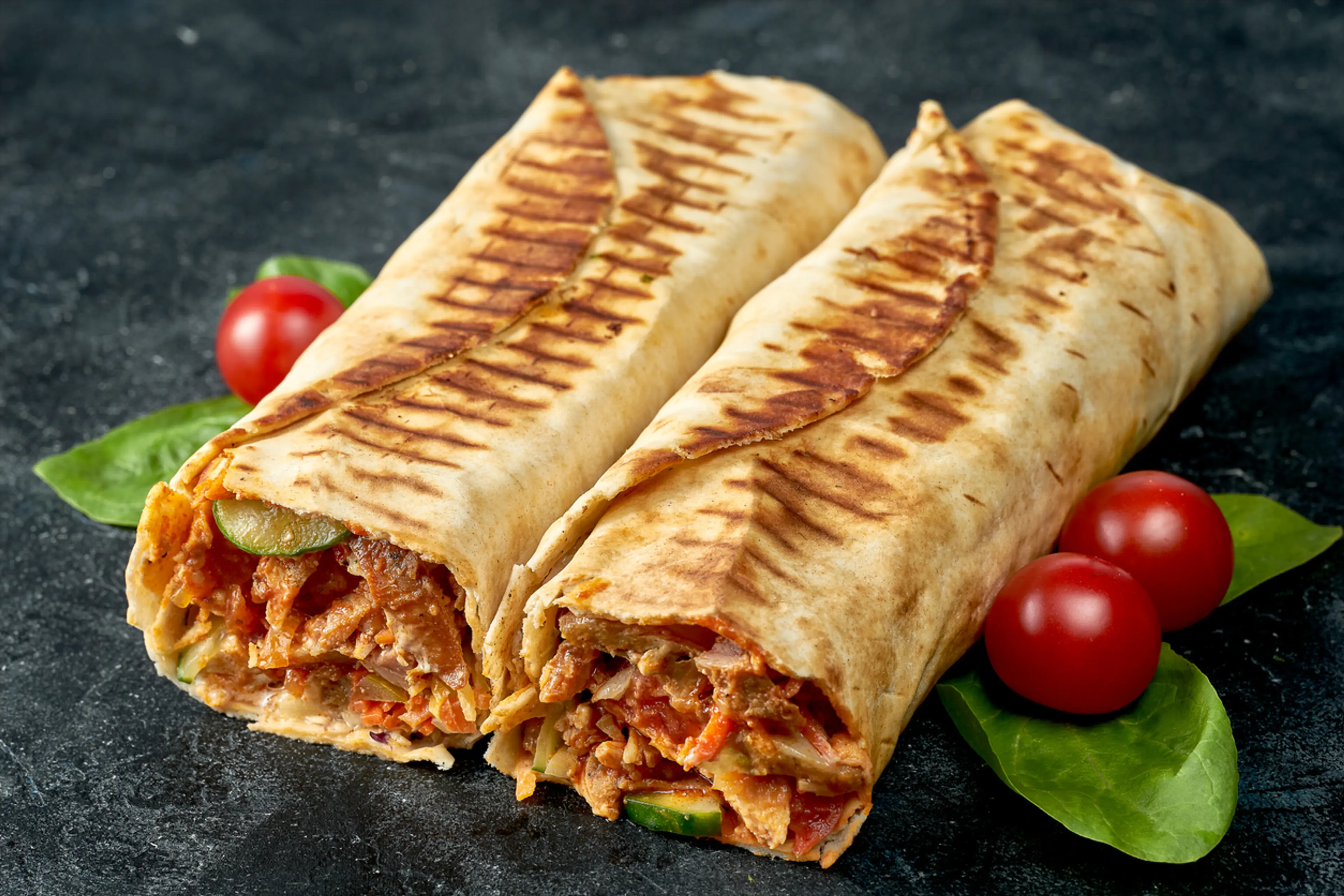
Shawarma
A popular street food in Jordan, Shawarma is a sandwich-like wrap of shaved chicken, goat, beef, or mixed meats.
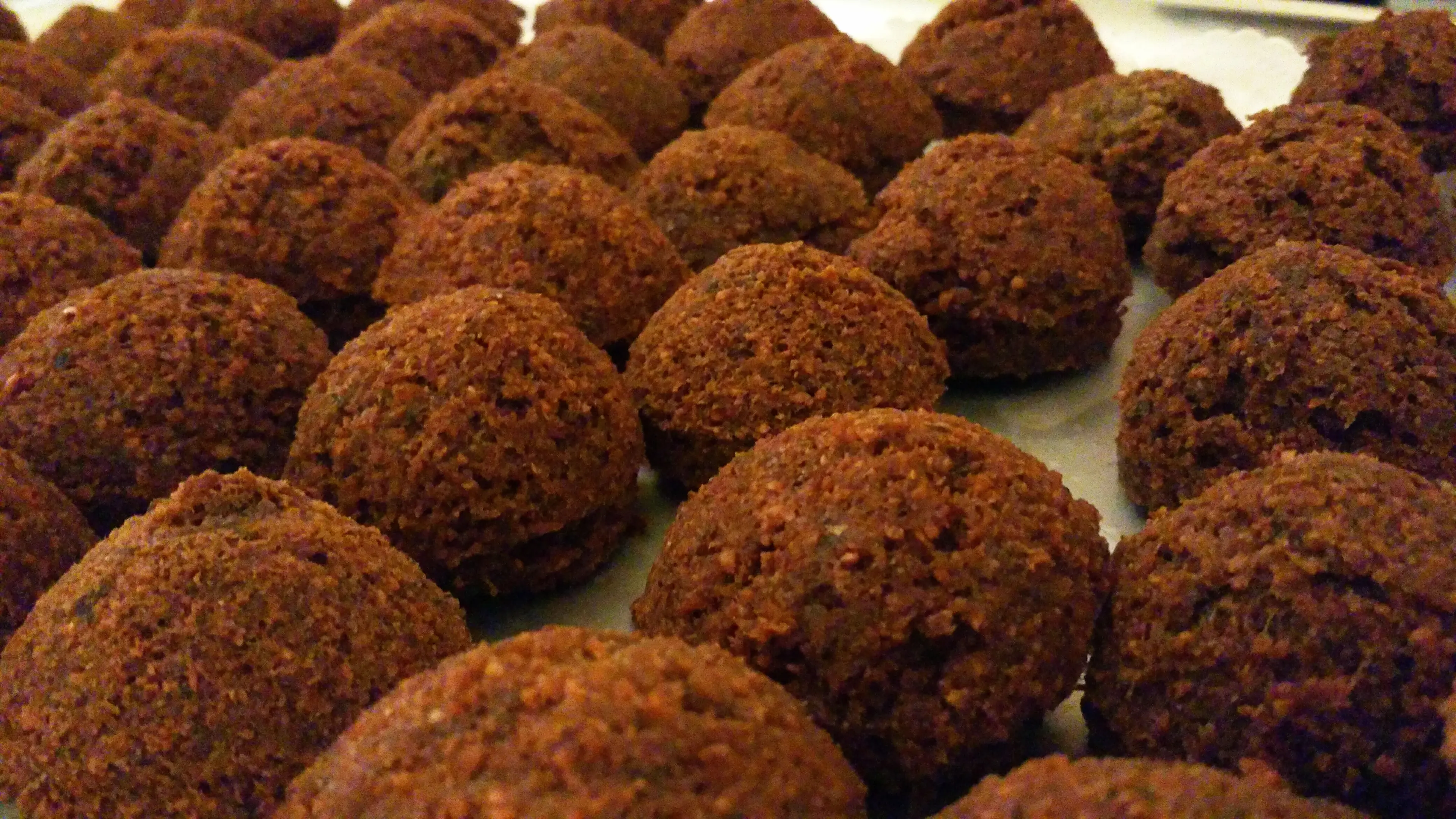
Falafel
A common street food in Jordan, Falafel is a deep-fried ball or patty made from ground chickpeas, fava beans, or both.
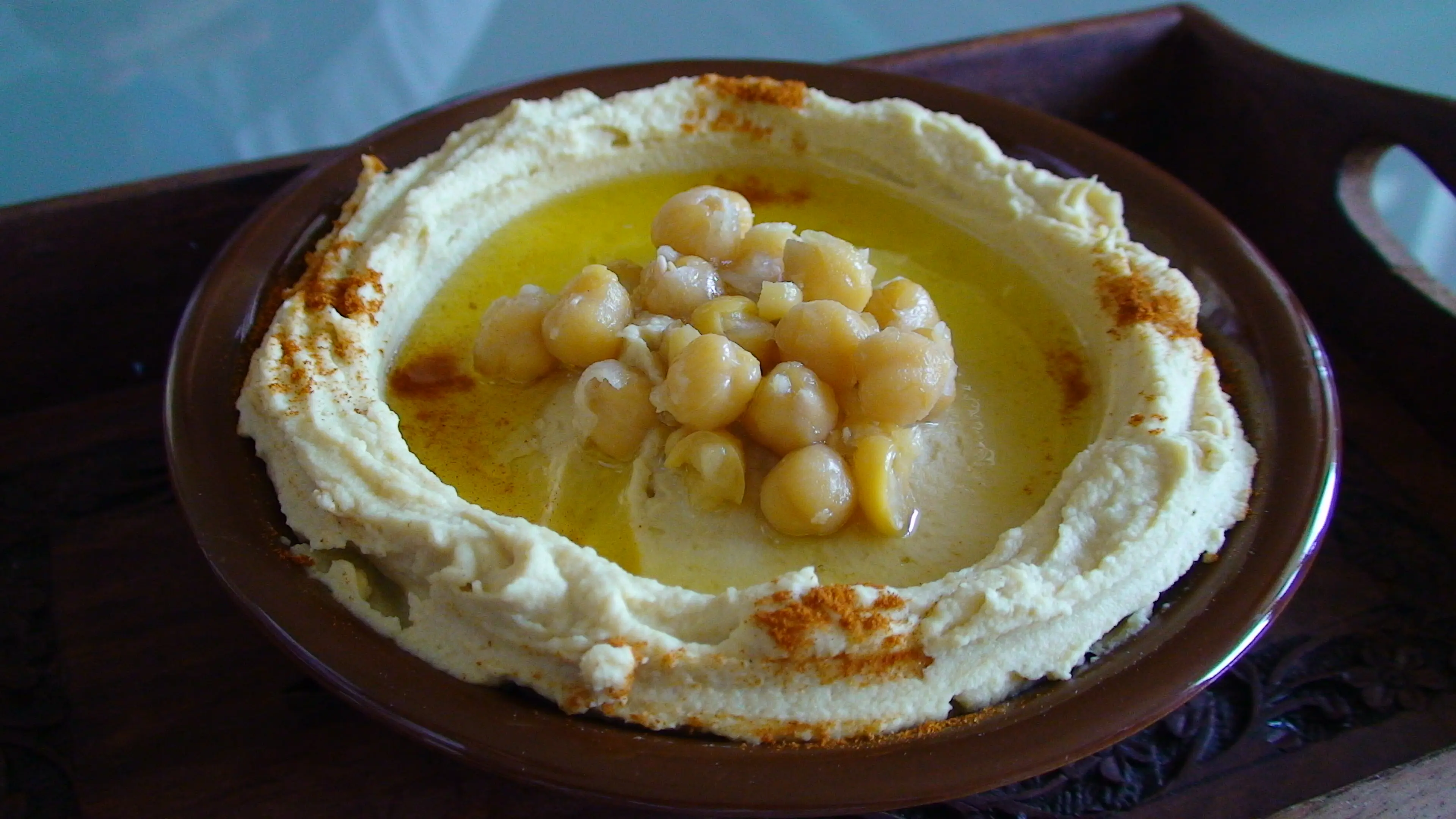
Hummus
A staple in Jordanian cuisine, Hummus is a creamy dip made from mashed chickpeas, tahini, olive oil, lemon juice, and garlic.

Tabbouleh
A healthy salad option in Jordan, Tabbouleh is made of finely chopped parsley, tomatoes, mint, onion, bulgur, and seasoned with olive oil, lemon juice, salt and pepper.
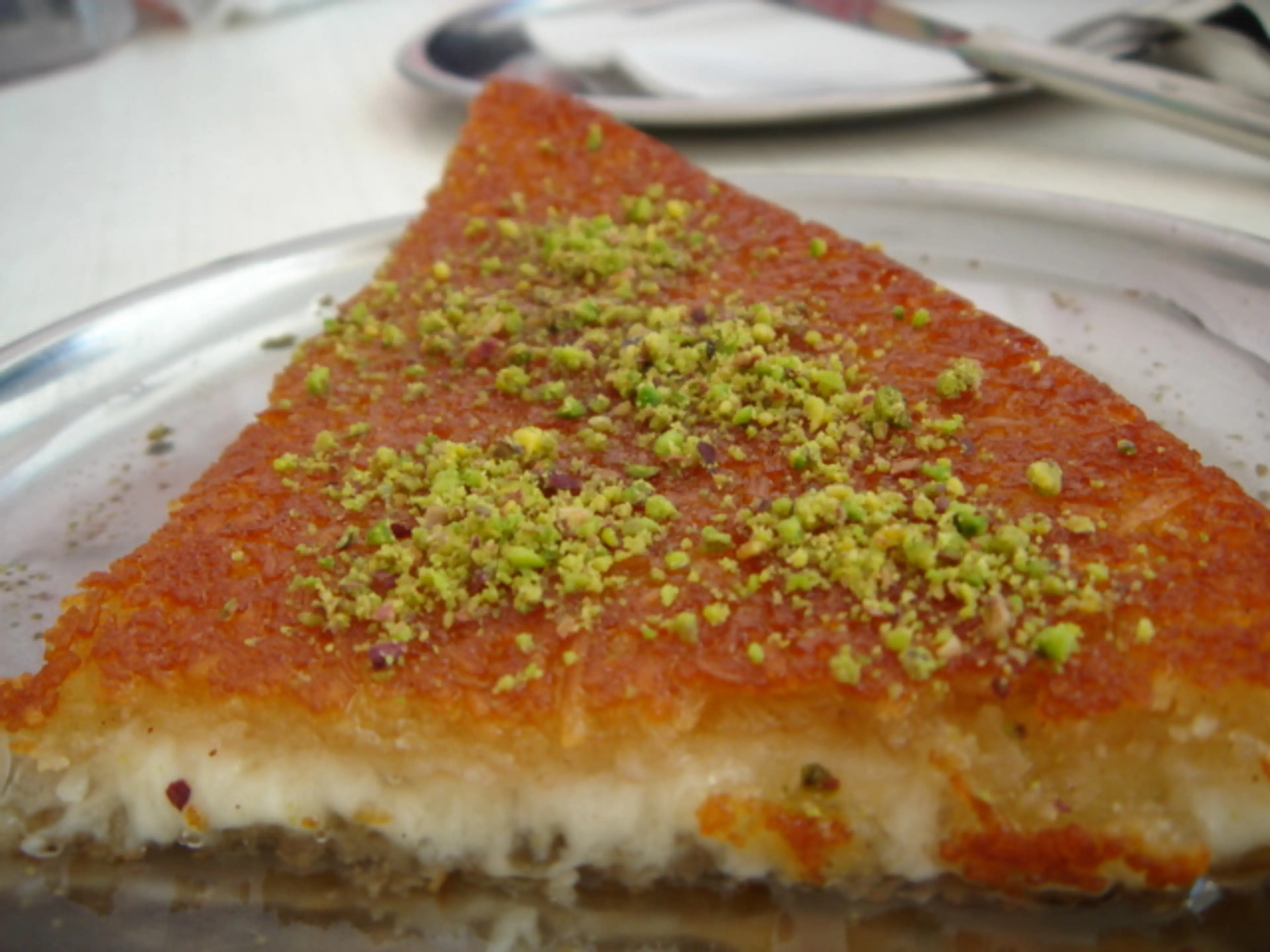
Knafeh
A popular dessert in Jordan, Knafeh is a cheese pastry soaked in sweet, sugar-based syrup.
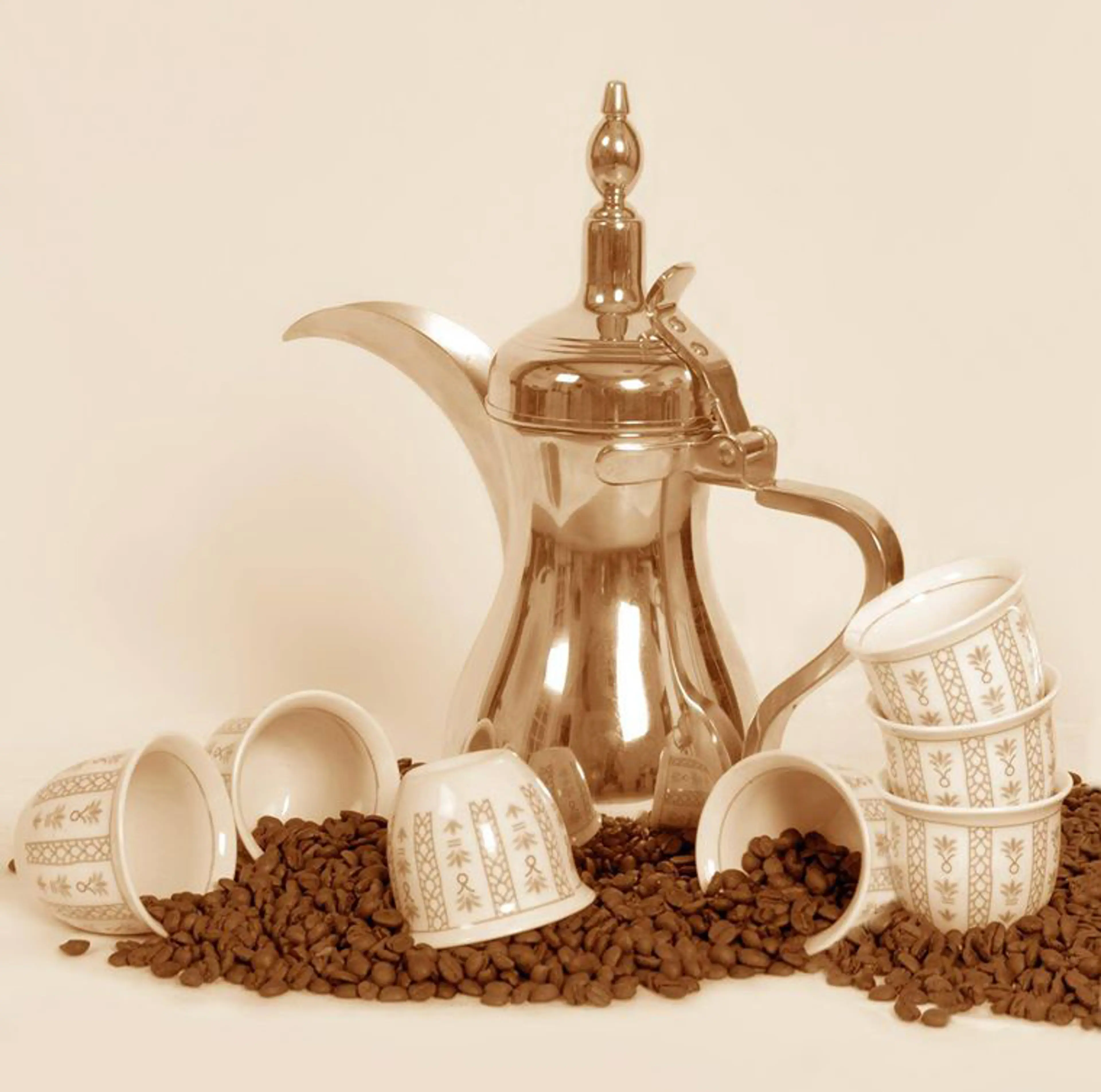
Arabic Coffee
A traditional drink in Jordan, Arabic Coffee is a strong, bitter coffee brewed in a special pot and often flavored with cardamom.
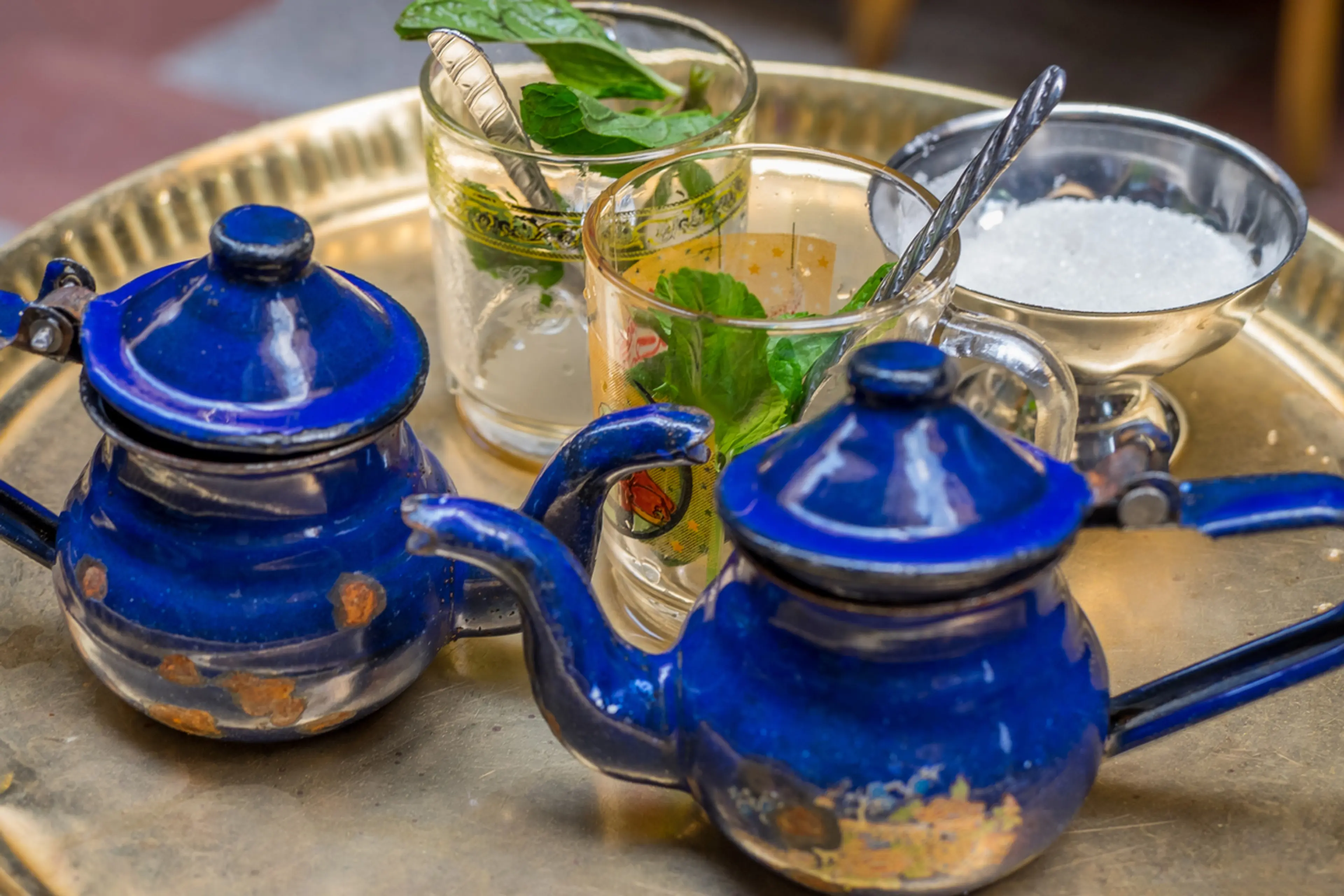
Mint Tea
A popular drink in Jordan, Mint Tea is a refreshing blend of black tea and mint leaves.
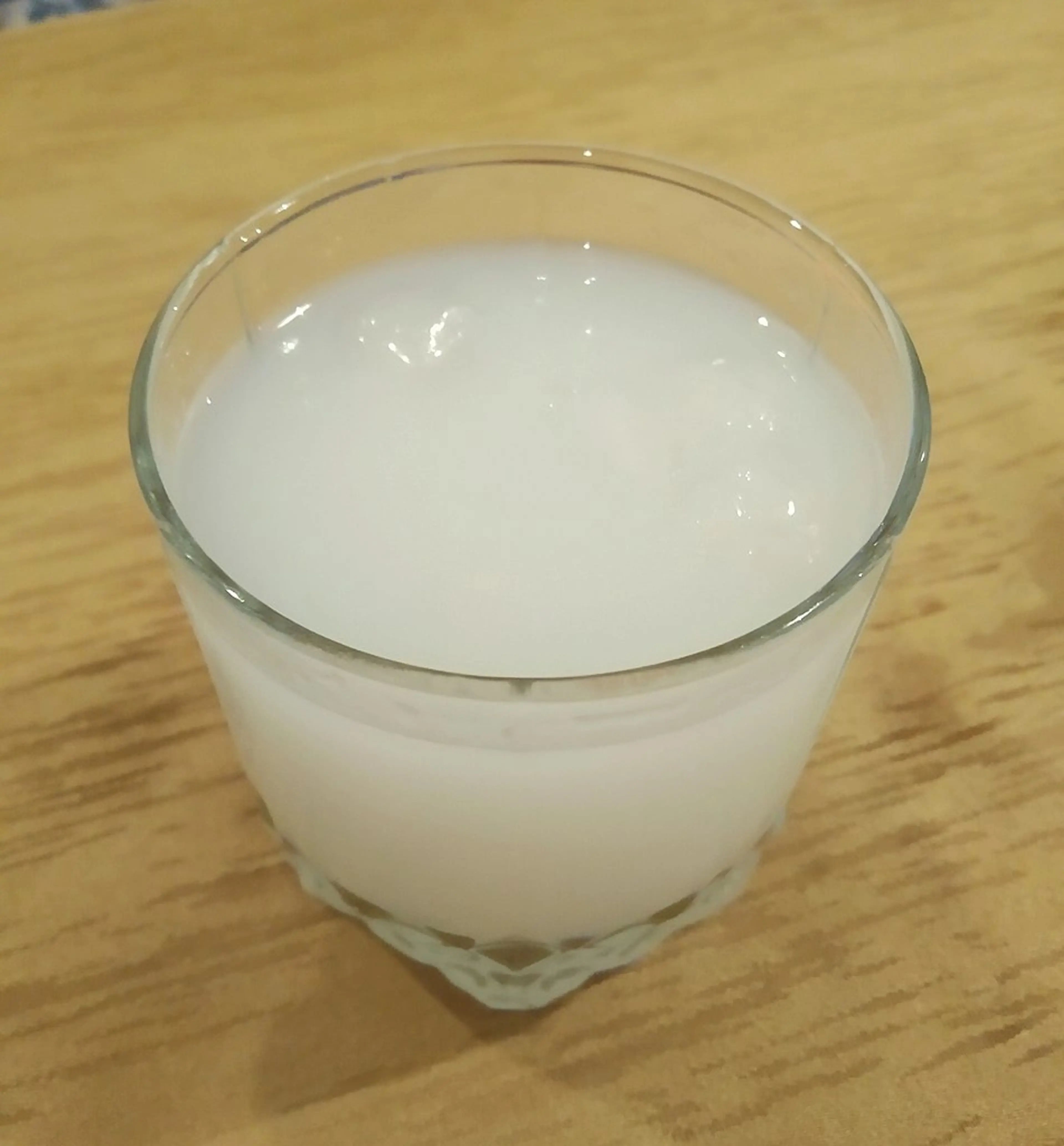
Arak
A traditional alcoholic beverage in Jordan, Arak is a clear, colorless, unsweetened anise-flavored distilled alcoholic drink.
Best time to visit
The best time to visit Wadi Rum, Jordan is during the spring months of March to May, and the fall months of September to November. During these periods, the weather is most pleasant, with daytime temperatures ranging from 20°C to 30°C (68°F to 86°F), making it ideal for outdoor activities like hiking, camel riding, and camping. The nights can be cool, so it's advisable to pack some warm clothing. These seasons also offer beautiful scenery, with wildflowers blooming in spring and the desert taking on a golden hue in the fall.
National holidays
Here you can find the national calendar of all public holidays for the year. These dates are subject to change as official changes are announced, so check back regularly for updates.
| Date | Day | Holiday Name |
|---|---|---|
January 1 | Mon | New Year's Day |
April 10 | Wed | Eid al-Fitr |
April 11 | Thu | Eid al-Fitr holiday |
April 12 | Fri | Eid al-Fitr holiday |
April 13 | Sat | Eid al-Fitr holiday |
May 1 | Wed | Labour Day |
May 25 | Sat | Independence Day |
June 15 | Sat | Arafah |
June 16 | Sun | Eid al-Adha |
June 17 | Mon | Eid al-Adha holiday |
June 18 | Tue | Eid al-Adha holiday |
June 19 | Wed | Eid al-Adha holiday |
July 7 | Sun | Muharram/New Year |
September 15 | Sun | Prophet's Birthday |
December 25 | Wed | Christmas Day |
How to get around
Jeep Tours
Jeep tours are one of the most popular ways to explore Wadi Rum. These tours can take you to the most famous landmarks and attractions in the area, including the Seven Pillars of Wisdom, Lawrence's Spring, and the Khazali Canyon. Jeep tours are typically guided, providing you with valuable insights into the history and culture of Wadi Rum.
Camel Rides
For a more traditional experience, you can opt for a camel ride. This mode of transport allows you to experience the desert in the same way as the Bedouin tribes have for centuries. Camel rides can be arranged for varying lengths of time, from short trips to multi-day treks.
Hiking
Hiking is another great way to explore Wadi Rum. There are numerous trails available, ranging from easy walks to challenging climbs. Hiking allows you to fully immerse yourself in the natural beauty of the desert, and to reach areas that vehicles can't access.
Hot Air Balloon Rides
For a truly unique perspective, consider a hot air balloon ride over Wadi Rum. These rides typically take place at sunrise, providing breathtaking views of the desert landscape as the sun begins to light up the sand dunes and rock formations.
Ridesharing
Ridesharing services are not commonly used in Wadi Rum due to its remote location and the nature of its terrain. Most visitors opt for guided tours or private transportation arranged through their accommodation or tour operators.
Horseback Riding
Horseback riding is another traditional way to explore Wadi Rum. It offers a unique and intimate connection with the desert. Horseback tours can be arranged for all skill levels, and can last from a few hours to several days.
Private Car or Taxi
If you prefer to explore at your own pace, you can hire a private car or taxi. This gives you the flexibility to create your own itinerary and spend as much time as you want at each location. However, please note that not all areas of Wadi Rum are accessible by car.
Important information
Currencyد.ا JOD
Time zoneUTC+2
Driving sideRight
Emergency phoneAmbulance: 191; Fire: 193; Police: 192
Drinking waterYes, but some opt for bottled water
Power sockets
Voltage230 V
Things to know about Wadi Rum, Jordan as a first time visitor
1
Wadi Rum is a desert region, so pack accordingly with lightweight, breathable clothing.
2
Despite the heat during the day, temperatures can drop significantly at night. Pack warm clothing for the evenings (temperatures can drop to 32°F/0°C).
3
Sun protection is crucial. Bring a hat, sunglasses, and high SPF sunscreen.
4
Stay hydrated. The desert climate can be dehydrating, so drink plenty of water.
5
Respect local customs and dress modestly. Women should avoid wearing revealing clothing.
6
If you're planning on hiking or climbing, bring sturdy shoes and appropriate gear.
7
The official currency is the Jordanian Dinar. It's a good idea to have some cash on hand as not all places accept credit cards.
8
English is widely spoken in tourist areas, but learning a few basic Arabic phrases can be helpful.
9
Be aware that Wadi Rum is a protected area, so littering is strictly prohibited.
10
It's recommended to hire a local Bedouin guide for desert tours. They have invaluable knowledge of the area.
11
Cell service can be spotty in the desert. Plan accordingly and let someone know your plans before heading out.
12
Avoid traveling alone, especially at night. The desert can be disorienting and potentially dangerous.
13
The best time to visit is during the spring (March-May) and autumn (September-November) when temperatures are more moderate (between 68°F/20°C and 86°F/30°C).
14
There are no ATMs in Wadi Rum, so withdraw cash before you arrive.
15
There are no formal dining establishments in Wadi Rum. Meals are typically included in overnight camp stays or can be arranged with your tour guide.
16
There are no public restrooms in the desert. Plan your bathroom breaks accordingly.
17
Always carry a map and compass when exploring the desert. It's easy to get lost.
18
Avoid touching wildlife and plants. Some may be harmful or protected species.
19
There's no public transportation in Wadi Rum. You'll need to arrange private transportation or join a tour.
20
Travel insurance is recommended. It can cover unexpected costs like medical emergencies or trip cancellations.
Basic Arabic to know as a first time visitor
English phrase | Native phrase | Pronunciation | When to use it |
|---|---|---|---|
Hello | مرحبا | Marhaba | Greeting someone |
Goodbye | وداعا | Wadaeaan | Leaving or saying goodbye to someone |
Please | من فضلك | Min fadlak | Asking for something |
Thank you | شكرا | Shukran | Showing gratitude |
Yes | نعم | Naam | Agreeing with someone |
No | لا | La | Disagreeing with someone |
Excuse me | عفوا | Afuwan | Getting someone's attention |
I'm sorry | أنا آسف | Ana asef | Apologizing |
Do you speak English? | هل تتكلم الإنجليزية؟ | Hal tatakallam al'ingleziyya? | Trying to find someone who speaks English |
I don't understand | لا أفهم | La afham | When you don't understand what is being said |
How much is this? | بكم هذا؟ | Bikam hadha? | Asking for the price of something |
Where is the bathroom? | أين الحمام؟ | Ayna alhammam? | Looking for a bathroom |
Help | مساعدة | Musaeadah | When you need assistance |
Water | ماء | Maa | Asking for water |
Food | طعام | Taam | Talking about food |
Hotel | فندق | Fanduq | Looking for a place to stay |
Taxi | تاكسي | Taksi | Looking for transportation |
Airport | مطار | Matar | Talking about travel |
Doctor | طبيب | Tabib | In case of a medical emergency |
Call the police | اتصل بالشرطة | Itasil bilshurtah | In case of an emergency |
Packing List
Clothing
Lightweight clothing
Sun hat
Sunglasses
Comfortable walking shoes
Swimwear (if planning to swim)
Scarf or bandana for dust protection
Toiletries
Sunscreen
Lip balm with SPF
Insect repellent
Personal hygiene items (toothbrush, toothpaste, deodorant)
Hand sanitizer
First aid kit
Travel documents and essentials
Passport
Visa (if required)
Travel insurance documents
Emergency contact information
Hotel and transportation reservation confirmations
Local currency (Jordanian Dinar)
Electronics and gadgets
Smartphone
Camera
Portable charger
Headphones
Adapter (if required)
Miscellaneous items
Reusable water bottle
Snacks
Travel guidebook or map
Binoculars
Backpack or daypack
Weather Conditions
Wadi Rum, also known as the Valley of the Moon, is a stunning desert landscape in Jordan that offers a unique travel experience. However, the weather can be quite extreme, so it's essential to be prepared. The desert climate in Wadi Rum is characterized by hot summers and cold winters. Summer temperatures can reach up to 100°F (38°C) during the day, so it's advisable to wear light, breathable clothing and a hat to protect yourself from the sun. Always carry plenty of water to stay hydrated. The desert can cool down significantly at night, even in the summer, with temperatures dropping to around 68°F (20°C), so a light jacket or sweater is recommended. Winter temperatures can drop to as low as 32°F (0°C) at night, so if you're planning a visit during this season, pack warm clothing, including a heavy jacket, gloves, and a hat. Daytime temperatures in winter can still reach a pleasant 60°F (15°C), so layering your clothing is a good idea. Regardless of the season, the desert sun can be intense, so don't forget to pack sunscreen, sunglasses, and lip balm. The air is often dry, so moisturizer can also be beneficial. The weather in Wadi Rum can change quickly, and sandstorms can occur without much warning. If you're planning on camping or hiking in the desert, it's a good idea to check the local weather forecast and take advice from local guides. Remember, the desert is a beautiful but harsh environment. Respect its power, be prepared, and you'll have an unforgettable experience in Wadi Rum.
| Month | Hi / Lo (°C) | Weather Overview |
|---|---|---|
January | 15° / 5° | January is the coldest month in Wadi Rum, with temperatures ranging from 5 to 15°C. It's a good time for tourists who prefer cooler weather. |
February | 18° / 7° | February sees a slight increase in temperature, ranging from 7 to 18°C. The weather is still cool and comfortable for sightseeing. |
March | 21° / 10° | March marks the beginning of spring with temperatures ranging from 10 to 21°C. The weather is pleasant, making it a great time for outdoor activities. |
April | 27° / 15° | In April, the temperature ranges from 15 to 27°C. The weather is warm, perfect for desert exploration and camping. |
May | 31° / 20° | May is the start of the hot season with temperatures ranging from 20 to 31°C. It's a good time for tourists who enjoy the heat. |
June | 34° / 23° | June is quite hot in Wadi Rum, with temperatures ranging from 23 to 34°C. It's ideal for tourists who love sunbathing and desert safaris. |
July | 36° / 25° | July is the hottest month in Wadi Rum, with temperatures ranging from 25 to 36°C. It's recommended for tourists who can handle high temperatures. |
August | 36° / 25° | August is equally hot as July, with temperatures ranging from 25 to 36°C. It's a good time for tourists who enjoy the desert heat. |
September | 33° / 22° | September sees a slight decrease in temperature, ranging from 22 to 33°C. The weather is still warm, ideal for desert exploration. |
October | 28° / 17° | In October, the temperature ranges from 17 to 28°C. The weather is pleasant, making it a great time for outdoor activities. |
November | 22° / 12° | November marks the beginning of cooler weather with temperatures ranging from 12 to 22°C. It's a good time for tourists who prefer cooler weather. |
December | 17° / 7° | December is a cool month in Wadi Rum, with temperatures ranging from 7 to 17°C. It's a good time for tourists who enjoy cooler temperatures. |
Did you know?
Places near by Wadi Rum, Jordan

Aqaba
A coastal city in southern Jordan known for its warm water and rich marine life, making it a popular spot for diving and snorkeling.
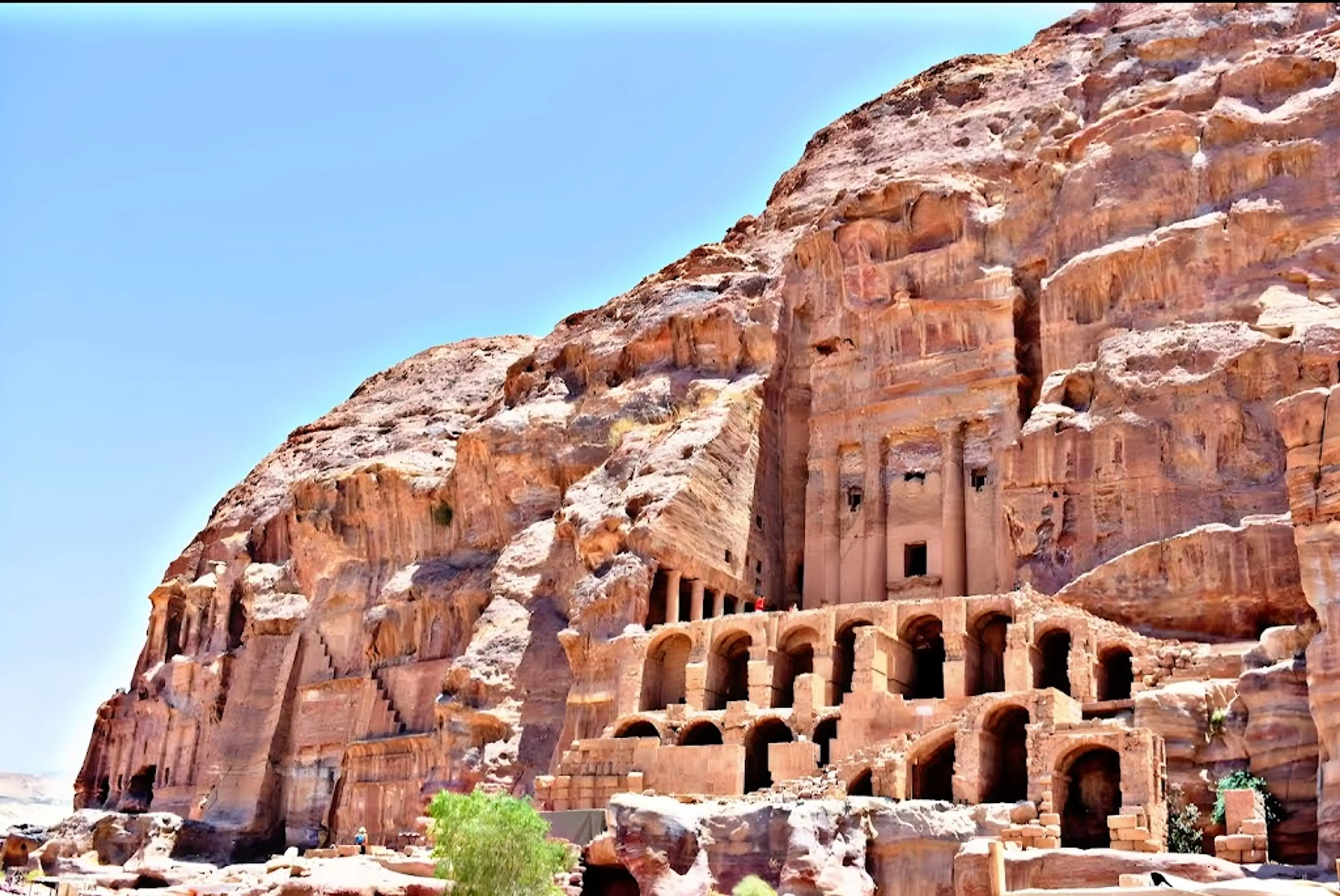
Petra
A historical and archaeological city famous for its rock-cut architecture and water conduit system.
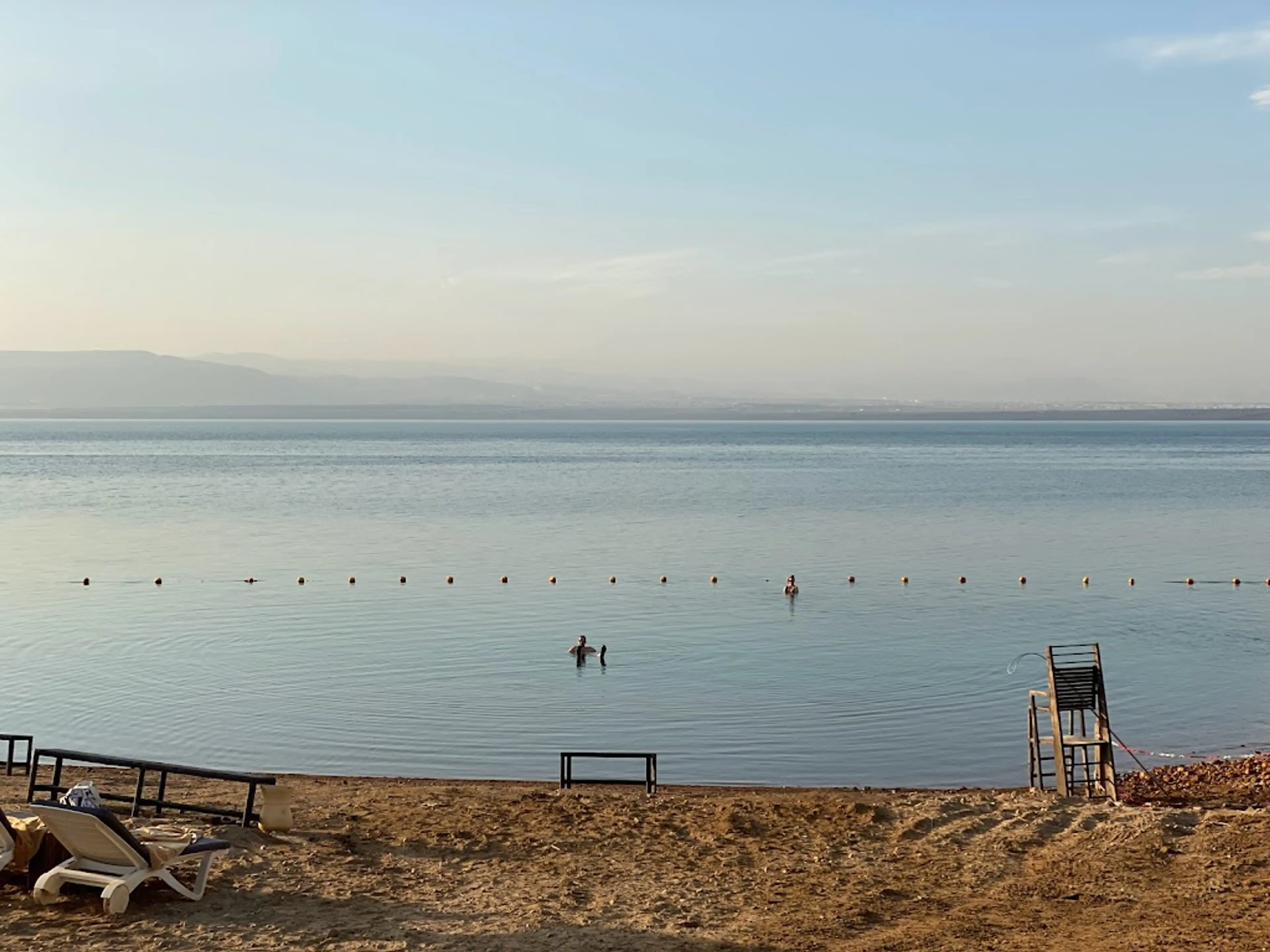
Dead Sea
A salt lake bordered by Jordan to the east and Israel and Palestine to the west. It is one of the world's saltiest bodies of water, and is known for its therapeutic properties.
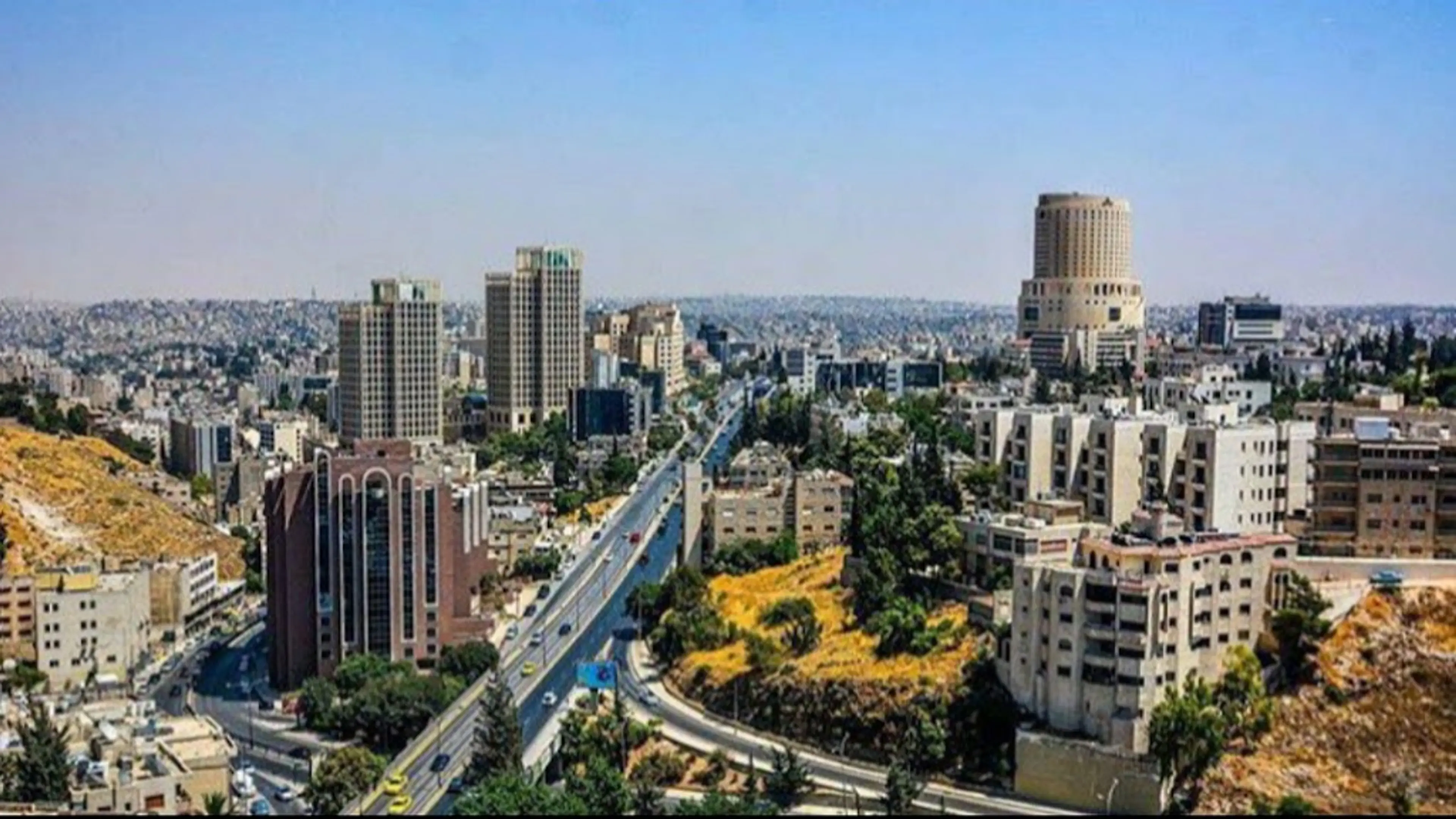
Amman
The capital and largest city of Jordan, known for its ancient Roman ruins and modern shopping districts.
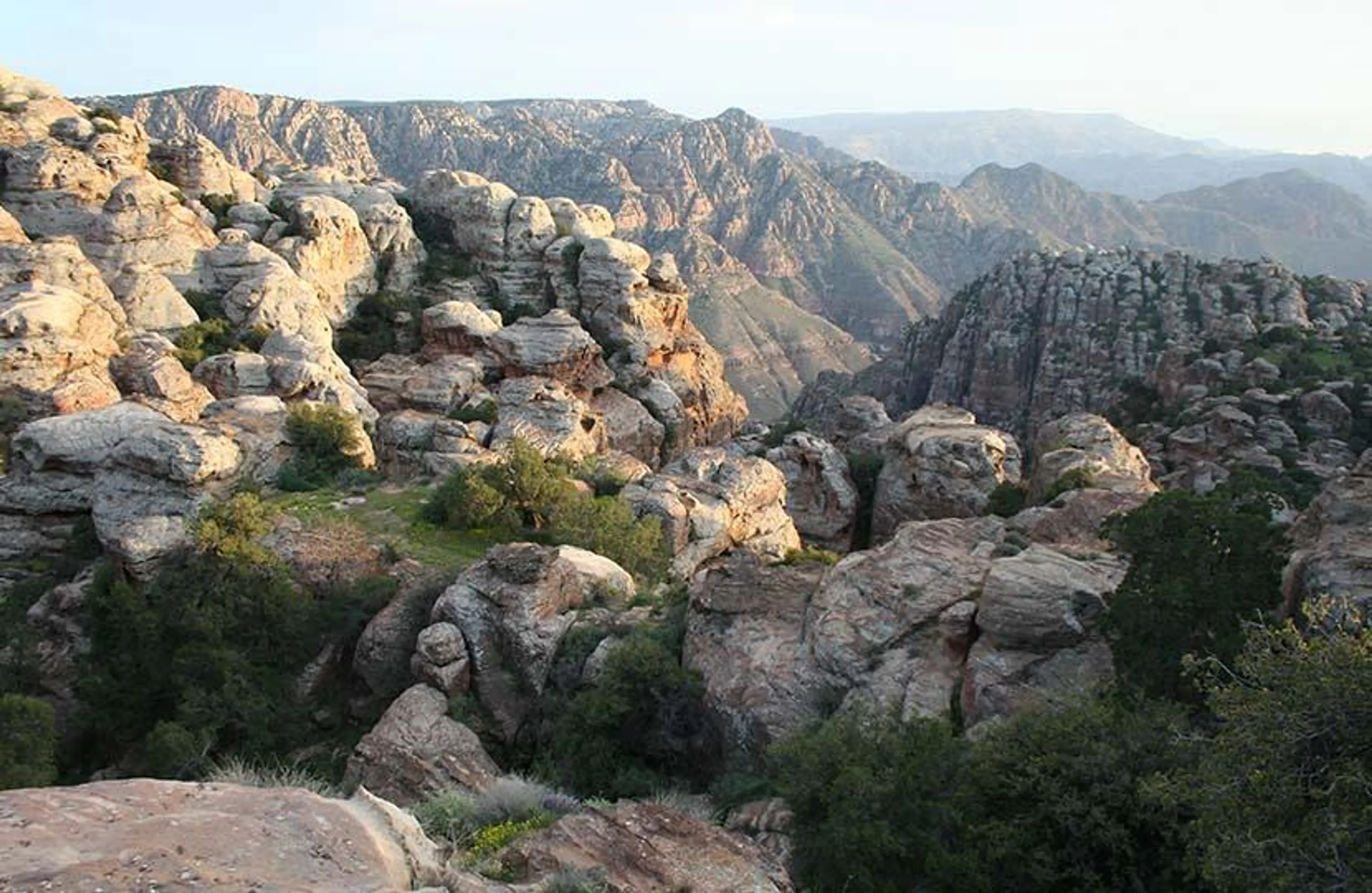
Dana Biosphere Reserve
Jordan's largest nature reserve, home to a rich variety of wildlife.
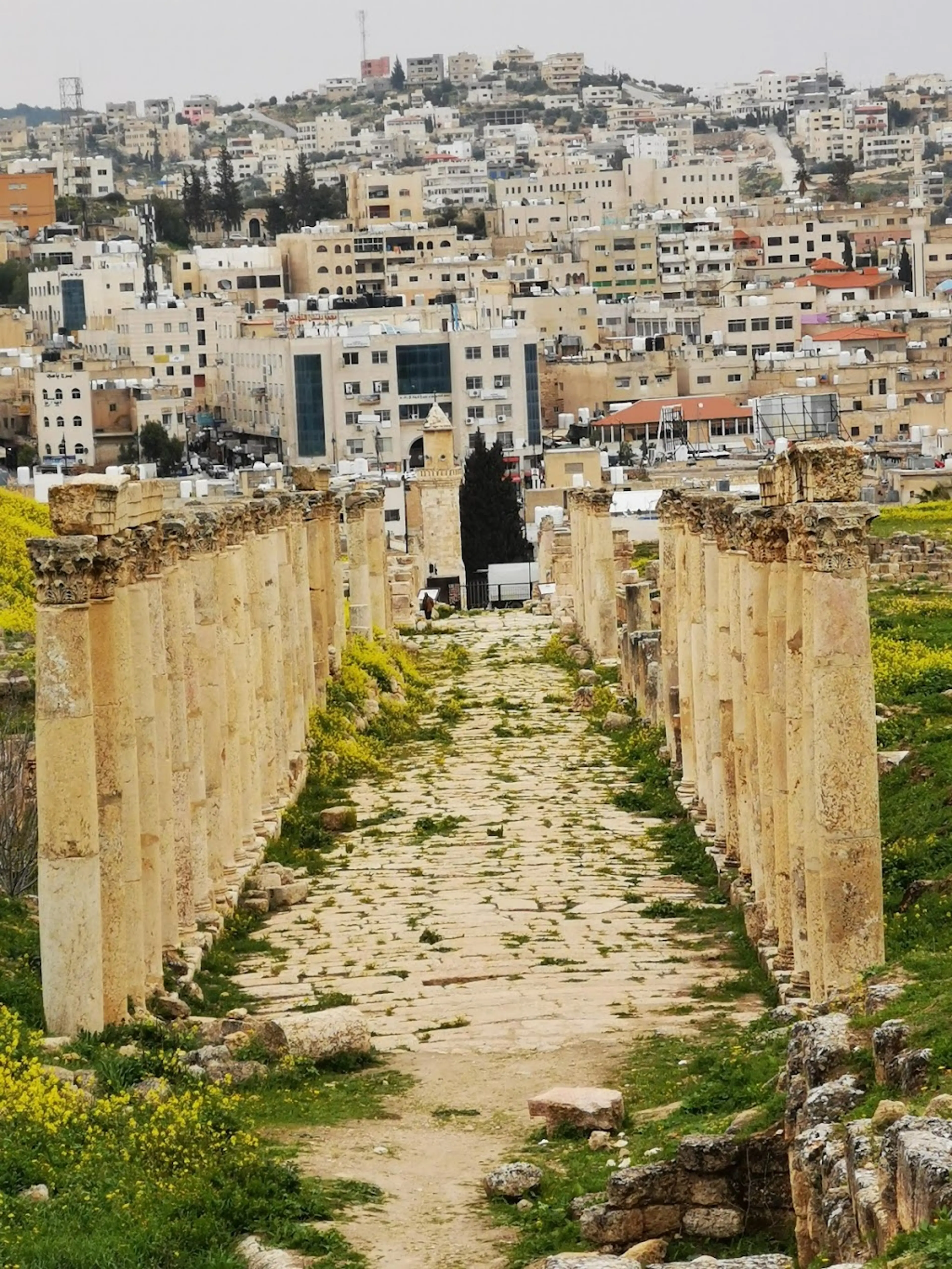
Jerash
A city in northern Jordan known for the ruins of the ancient city of Gerasa, a well-preserved example of a Roman provincial city.
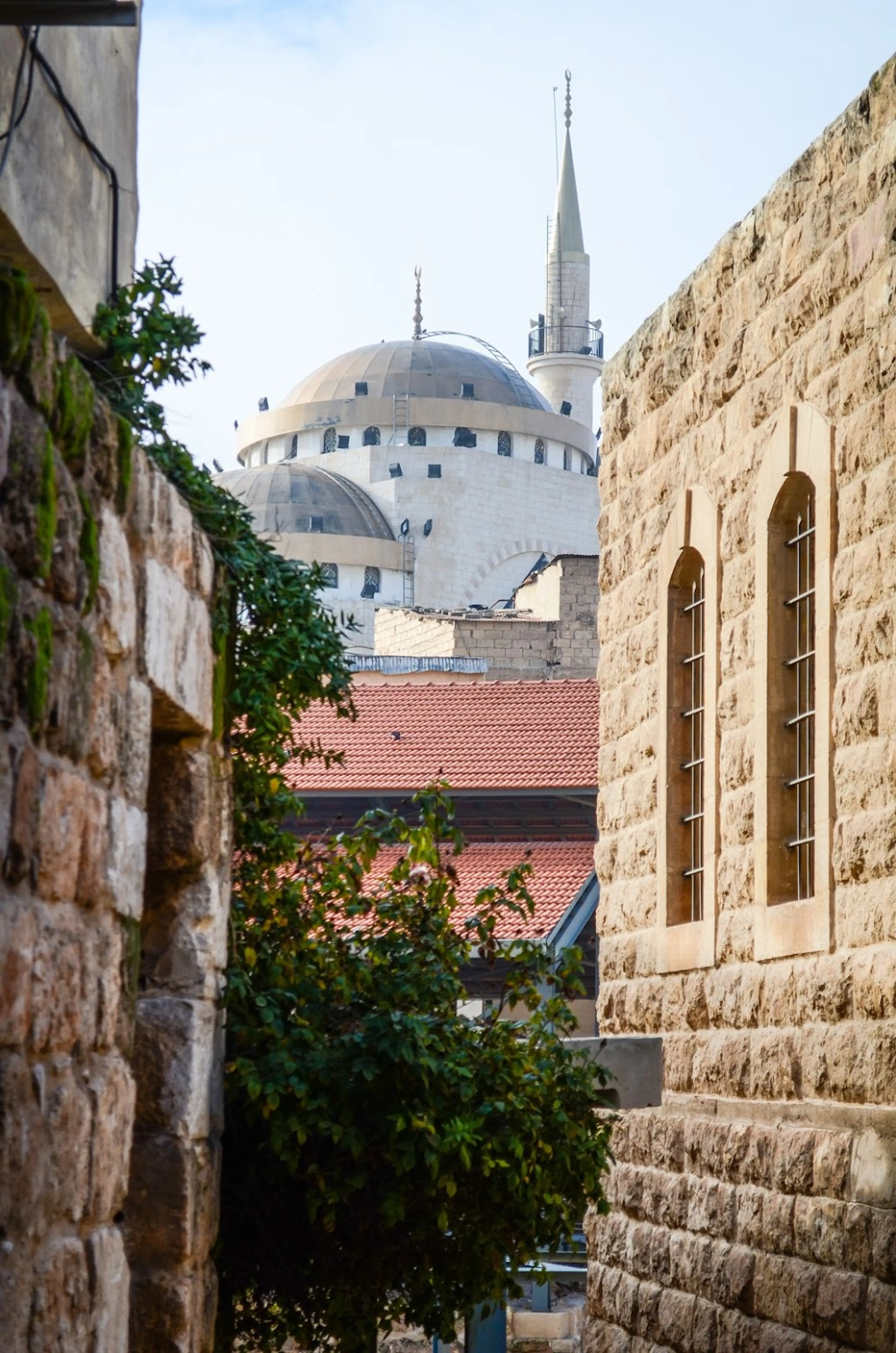
Madaba
A city known for its Byzantine and Umayyad mosaics, especially a large Byzantine-era mosaic map of the Holy Land.

Mount Nebo
An elevated ridge mentioned in the Hebrew Bible as the place where Moses was granted a view of the Promised Land.
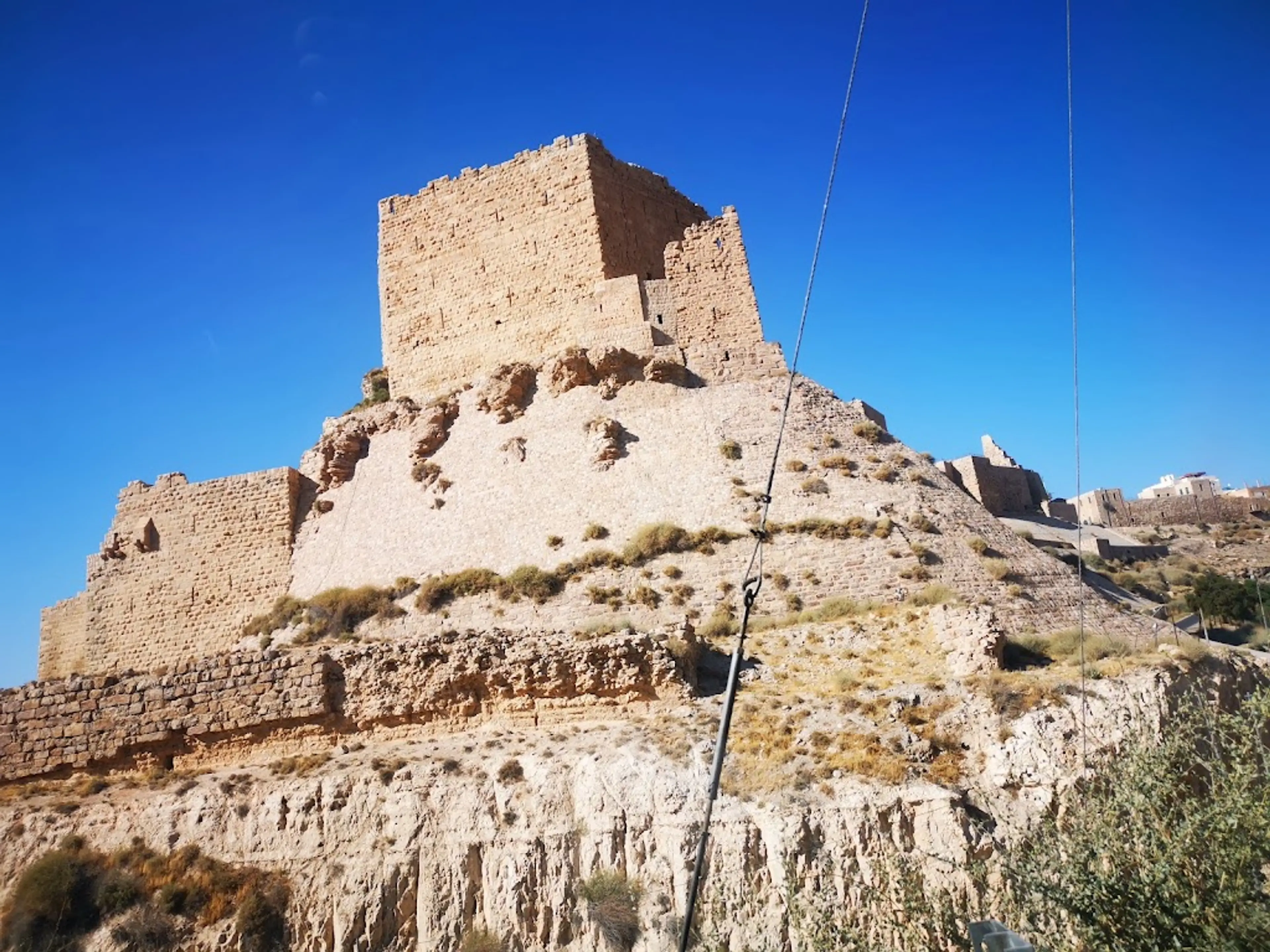
Al-Karak
A city known for the Karak Castle, a large crusader castle located on a hilltop.
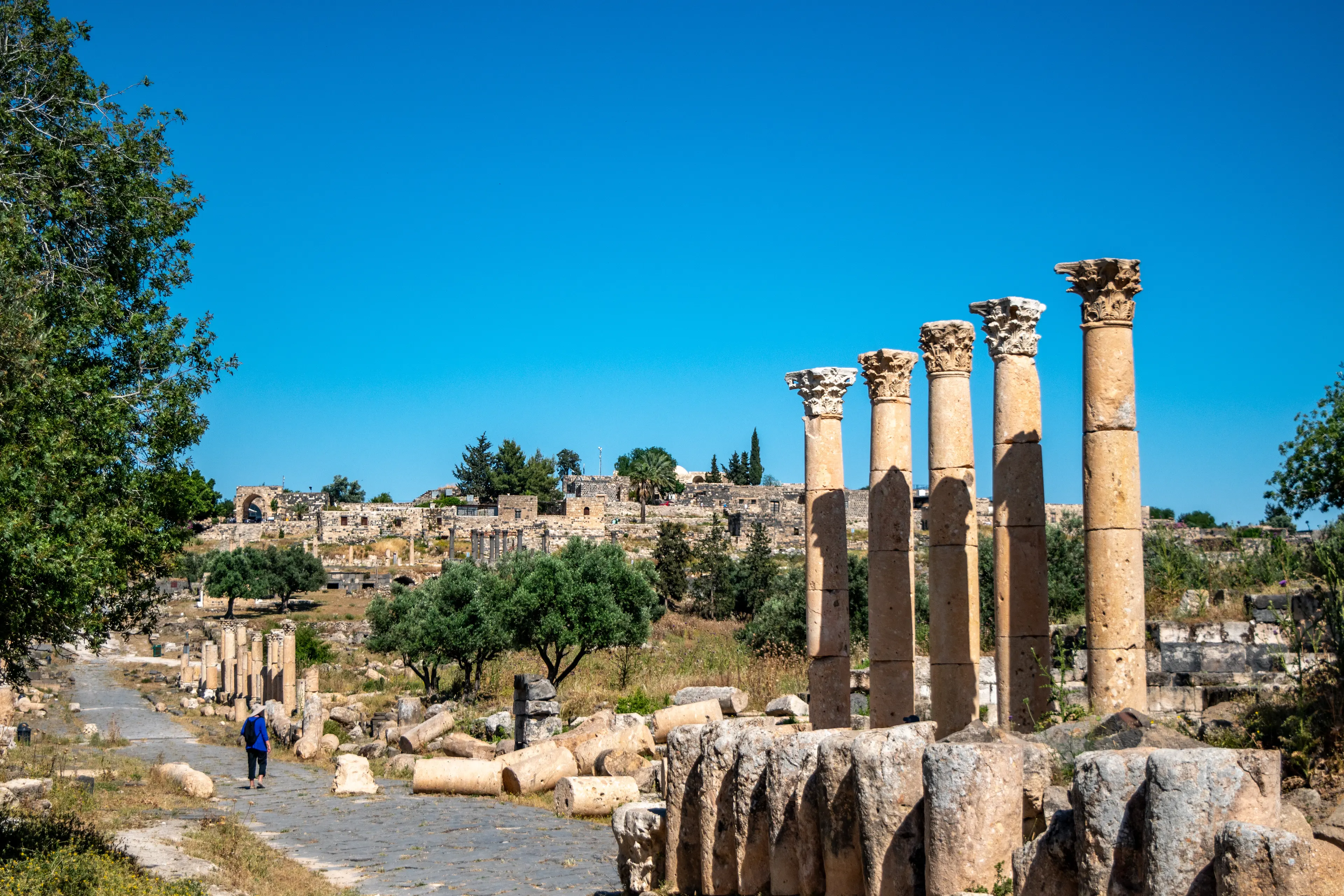
Umm Qais
A town in northern Jordan near the site of the ancient town of Gadara. Umm Qais offers beautiful views over the Yarmouk River, the Golan Heights, and more.